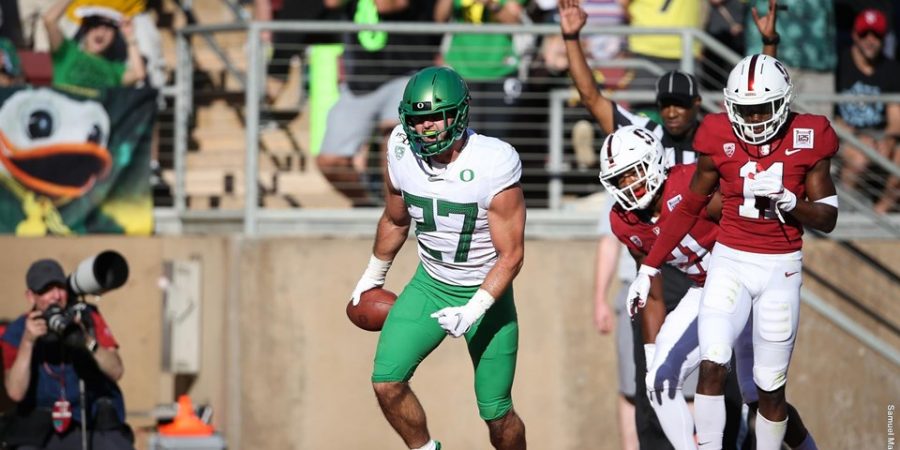The bye week has come for Oregon football, and the general feeling around the program is that the timing couldn’t be any more, well, timely. With injuries riddling the offense, the running game in a current state of disrepair, and an emotional victory over Stanford squarely in the rear-view mirror, it truly does feel like the perfect opportunity to take a step back, take a deep breath, and re-assess everything before diving headlong back into the meat grinder.
With that, WFOD plans to do just that, as we’ll take a position-by-position look at who and what has stood out thus far, as well as offer up our thoughts on what should be expected once the Ducks return to action.
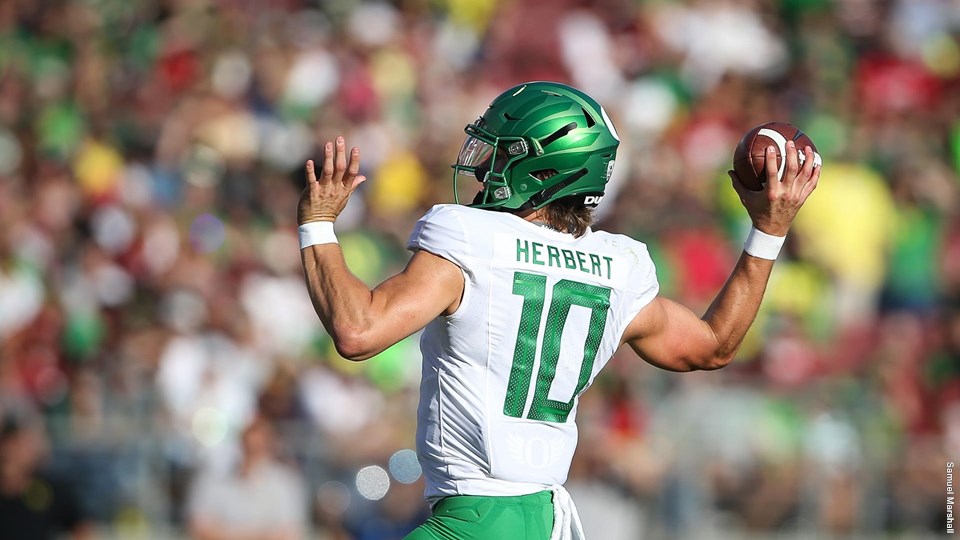
Quarterback
With four games down, it’s hard to be anything less than totally impressed with the way Justin Herbert has performed early on. Despite throwing to a receiver group that has been practically wiped out due to injury, Herbert has been more efficient and effective than ever, completing 74.4 percent of his passes for 1,127 yards, 14 touchdowns, and zero interceptions. His command of the offense in his second full year with Ducks offensive coordinator Marcus Arroyo has been exemplary, but perhaps even more impressive is how much he’s made those around him better.
Even without prospective top targets like Juwan Johnson, Brenden Schooler, and Mycah Pittman, Herbert has shown confidence in pass catchers like Johnny Johnson, Jacob Breeland, and Jaylon Redd, who have in turn elevated their play. Herbert’s ability to facilitate just that was perhaps one of the biggest criticisms of the Eugene native a year ago, but he has roundly quieted those concerns with his tremendous start to the season. As long as he remains healthy, expect Herbert to only progress along this remarkable trajectory.
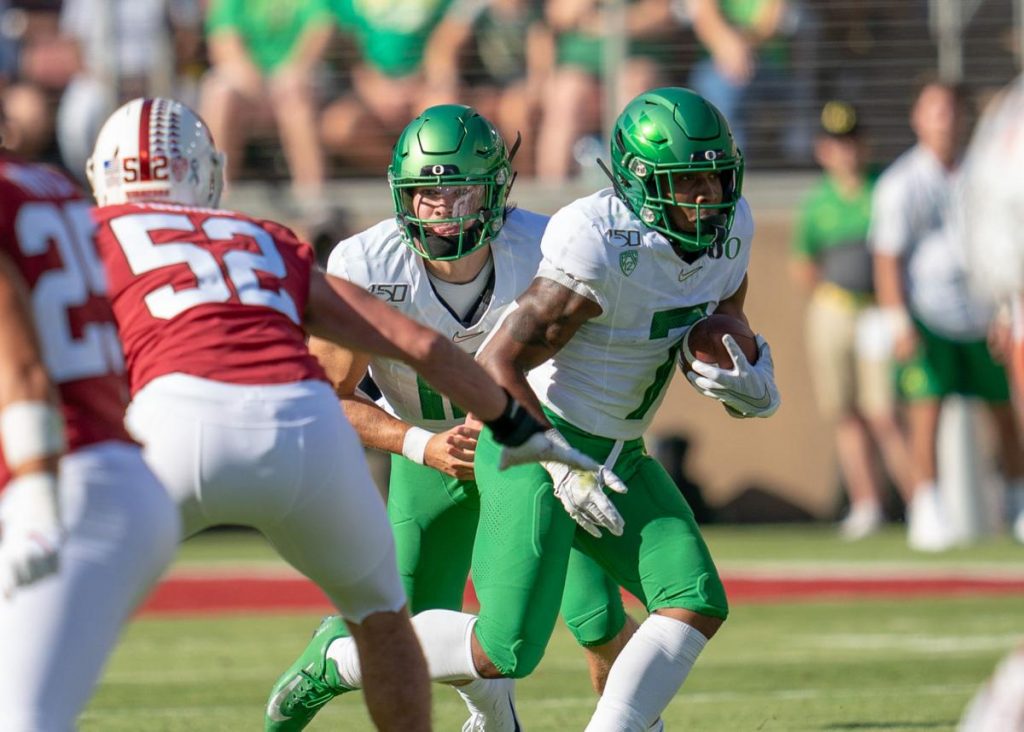
Running Back
Where does one begin when discussing Oregon’s running backs through the first four games of the season. Similar in the way that the receivers were the Achilles’ heel for the Ducks’ offense last season, the running backs are proving to be just as much – if not more – of a disappointment this season. Behind the obvious pluses for the Oregon offense at quarterback and offensive line, running back was expected to be a position that took a leap forward after an encouraging year that was led by a pair of freshmen in CJ Verdell and Travis Dye. Last year, the duo combined to rush for 1,757 yards and 14 touchdowns, as Verdell led the way with 1,018 yards and 10 scores. This year, Verdell and Dye are on pace to finish the 2019 season well shy of last year’s marks (1,248 yards, seven touchdowns), as neither player has appeared anywhere near capable of leading this offense on the ground.
Even before last week’s stunningly anemic rushing performance at Stanford, serious concerns had been raised concerning the state of Oregon’s ground attack. However, after averaging just 2.03 yards per carry against one of the more pedestrian run defenses in the Pac-12, it’s officially time for some self-reflection on behalf of the Oregon coaching staff (specifically Jim Mastro) and the running back room as a whole. Verdell and Dye have no doubt demonstrated a lack of patience, vision, and ability to break tackles, which has hampered the effectiveness of the ground game, but just as frustrating is the apparent lack of adjustments the staff has made to help correct these shortcomings. It’s hard to imagine these issues haven’t been addressed with the players in question, after all, they’ve been exposed for all to see on multiple occasions this season. Yet, the fact the problems have persisted would seem, on some level, to be a reflection of the coaching that’s taking place. No matter which way you slice it, the Ducks have major flaws when it comes to running the football, and if allowed to continue, it’s only a matter of when – not if – it will cost Oregon a game they may otherwise be in a position to win.
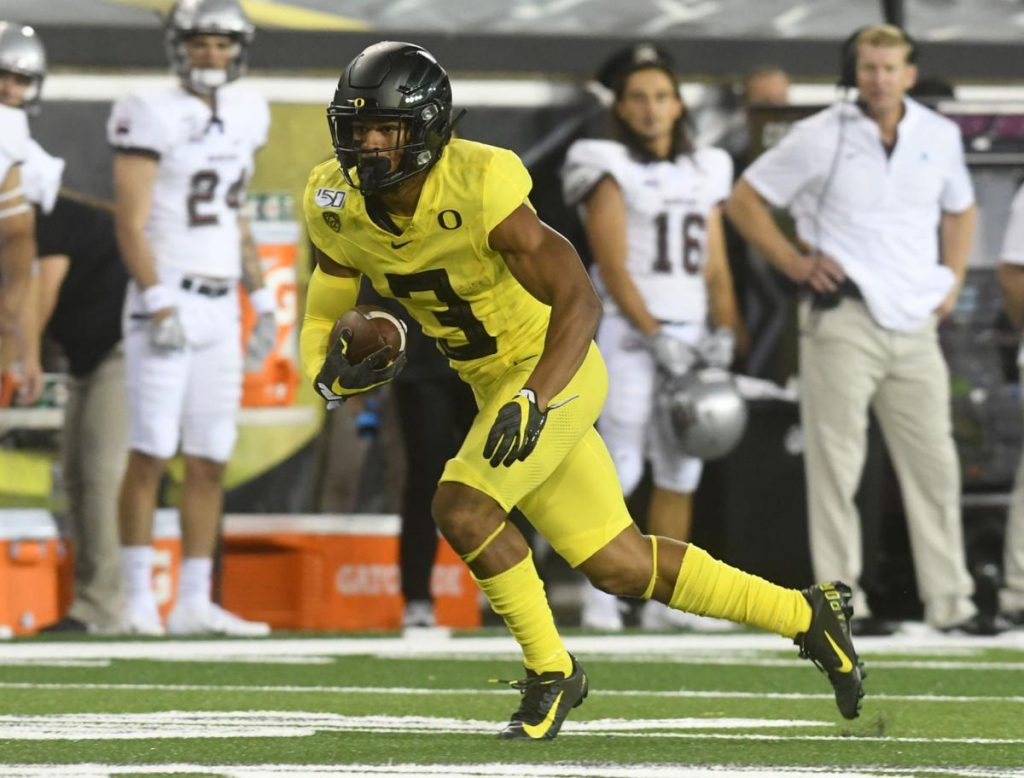
Wide Receiver
After serving as the punching bag for critics last season, Oregon’s wide receivers have shed that label and established a new standard for themselves through four games in 2019. The injuries to the Ducks’ wide receivers have been well documented. Before the season even began, the Ducks lost five scholarship wideouts (Juwan Johnson, Brenden Schooler, Mycah Pittman, JR Waters, and Lance Wilhoite) to lengthy injuries that cast serious doubt over a unit that was already viewed with healthy skepticism in the lead up to the season. In fact, things got so bad that Oregon was forced to convert former tight end Spencer Webb and former wide receiver turned cornerback Daewood Davis back to wide receiver in order to help provide depth at the position.
Yet, in the face of all that, this unit has not only found a way to survive, but thrive. Johnny Johnson, the primary target for much of last year’s criticism, has solidified himself as the primary target for Herbert out wide, having already surpassed his production from last year with 22 catches for 264 yards and two touchdowns. Jaylon Redd is also well on his way to eclipsing the numbers he posted as a sophomore a year ago. With 17 catches for 149 yards and three touchdowns, Redd is proving to be a dynamic force in the quick passing game, an aspect of the offense that went missing all too often in 2018. As the receivers return to full health, which could happen as soon as the end of the bye week, anticipate the Oregon aerial attack to be even more potent and to shoulder an even greater load, particularly as the running game tries to find its stride.
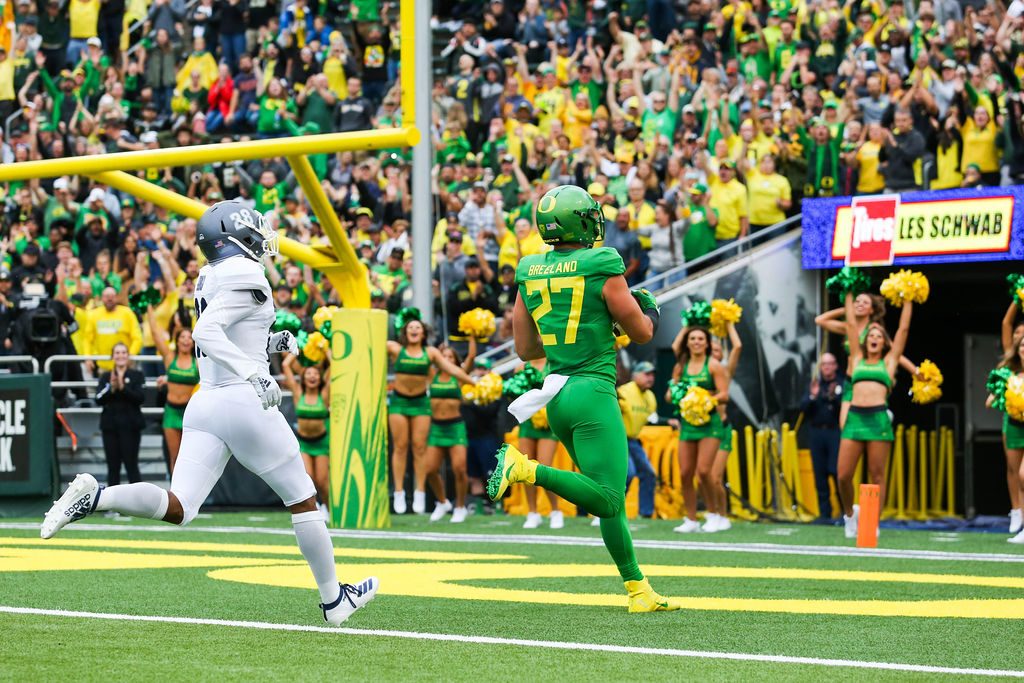
Tight End
Helping supplement the production of the wide receivers in a major way has been Oregon’s tight ends group, and specifically Jacob Breeland. In his final season as a Duck, Breeland has emerged as the go-to weapon for Herbert through the air. Yes, Johnny Johnson has reeled in the most passes from Herbert through four games, but Breeland has been the offense’s top playmaker thus far. Breeland’s 18 catches for 265 yards have featured five touchdown receptions, which leads all Oregon pass catchers. Additionally, his hot start has also moved him into fourth in career receiving yards among Oregon tight ends all-time with 1,085. With Johnson, Schooler, and Pittman all set to return, it’s logical to think that Breeland’s production could slow, but there’s no denying that the SoCal native has staked his claim as a trusted target in the passing game this season.
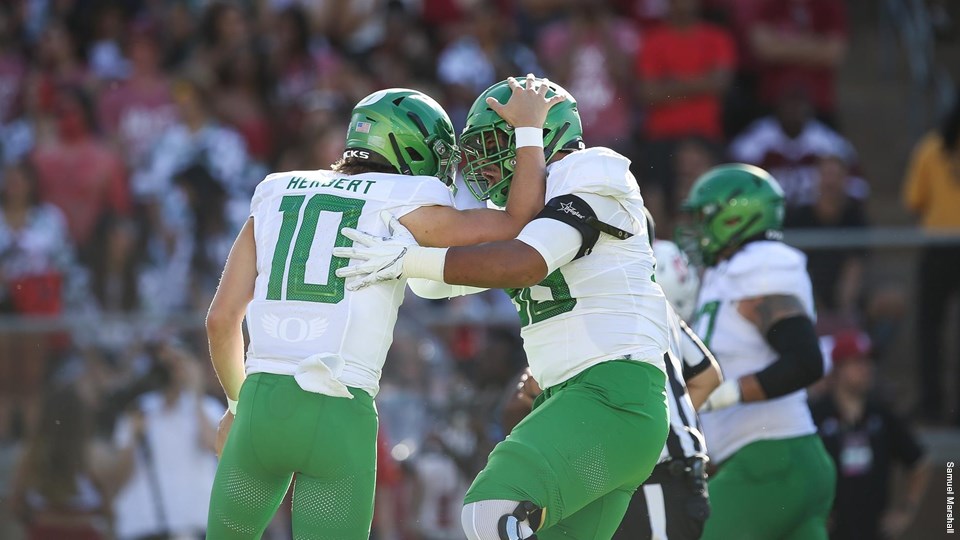
Offensive Line
Justin Herbert rightfully earns the headlines for the Oregon offense, but just below the break is the Oregon offensive line, which has lived up to the immense hype that was heaped upon them this offseason. Much was made about the experience the Ducks returned up front, as Shane Lemieux, Jake Hanson, and Calvin Throckmorton returned for their senior seasons as three-year starters. Each, along with Dallas Warmack, the returning starter at right guard, has proven themselves worthy of the preseason praise. They largely neutralized Auburn’s defensive line in the season opener and have done well to provide Herbert a clean pocket to operate from – at least up until last week, when they surrendered four sacks to Stanford with Hanson sidelined with an undisclosed injury. But the player who has anchored the unit from pretty much the moment he stepped on campus is sophomore left tackle Penei Sewell.
Last season, Sewell was arguably Oregon’s best offensive lineman prior to suffering a high ankle sprain that robbed him of the final half of the year. Fully healthy entering 2019, Sewell has only built on his reputation as perhaps the most talented offensive lineman to ever play at Oregon. In fact, the last two weeks have seen Sewell named as Pro Football Focus’ (PFF) offensive lineman of the week, as the St. George, Utah native has not allowed a pressure, hurry, or hit on quarterback Justin Herbert for three straight weeks. Currently ranked as the third-highest graded offensive lineman in the nation per PFF, Sewell, short of Herbert, has been Oregon’s most valuable player.

